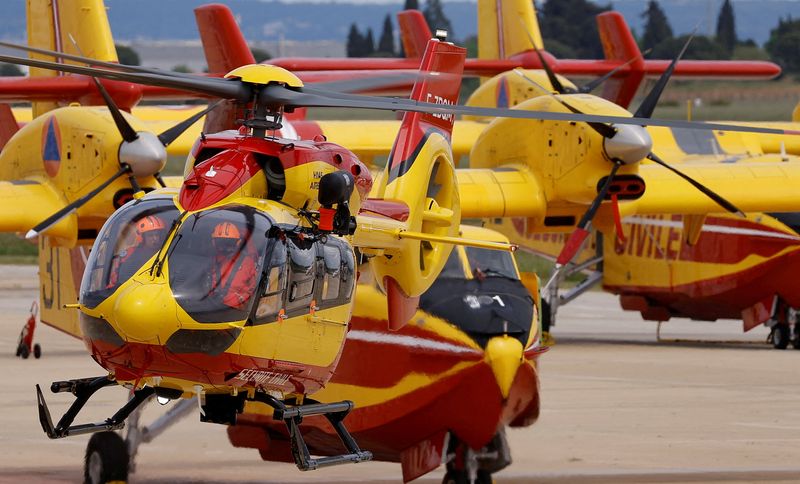By Tim Hepher
PARIS (Reuters) - After a decade in the shadows, one of Europe's mystery aerospace projects - the X9 helicopter - is taking shape as a potential future successor to Airbus Helicopters' H145 light-twin chopper, with plans for a demonstrator underway, industry sources said.
The X9 was one of two coded projects briefly sketched out by former helicopters chief Lutz Bertling in 2012 alongside the X6 SuperPuma replacement, which was later abandoned as low oil and gas prices at the time hit a key prospective customer base.
Since then, little further has been said about the market for the X9 sister project - or even whether it still exists.
A Berlin filing by Airbus Helicopters' German subsidiary in 2020 noted its board had been briefed on the X9 and unspecified "further steps".
The same unit later said it would focus on ensuring "the future viability of civil helicopters" at Donauwoerth, Germany.
The Bavarian town is home to the twin-engined H135 and H145, while other civil programmes focus mainly on Marignane, France, where the world's largest commercial helicopter maker is based.
With sales still booming, Airbus has so far been content to upgrade the H145, which has its roots in a 1990s German-Japanese project and whose latest version adds an extra blade.
In private, however, Airbus is exploring a potential H145 successor under the X9 codename and is ready to take the idea one step beyond the drawing board by seeking propulsion and other options for a planned demonstrator, the sources said.
A demonstrator is a one-off test bench designed to test technology, which may or may not lead to a specific product. But the plans indicate where Airbus is focusing its attention.
The X9 also has a programme office in Donauwoerth, according to a LinkedIn post.
Even so, with the upgraded H145 still in demand, any launch decision remains some way off, the sources said. It can take 7-10 years and $1 billion to develop a new helicopter.
In a statement to Reuters, Airbus did not respond directly to questions about the X9, but said: "As market leaders, we are of course looking into the next generation of helicopters.
"We are currently working on several research and technology bricks that are aimed at making our aircraft more efficient while offering performance and mission flexibility."
Not all studies become programmes, it said, adding: "Currently our light twins are best sellers with over 65% of the civil and parapublic market."
GERMANY BOOST
Airbus has built 1,600 of the various versions of H145 for medical, policing and other roles. It sold 83 H145s in 2022, second only to its best-selling light H125/130 "Squirrel".
According to U.S. consulting firm Chase & Associates, H145 competitors include Leonardo's AW169.
Both aircraft will be at this week's Paris Airshow, with the H145 on the tarmac in its recently launched military version.
Any future H145 successor would regenerate the German side of Airbus Helicopters, formed from a 1992 merger between divisions of France's Aerospatiale and MBB of Germany to counter U.S. rivals led by Bell, Boeing (NYSE:BA) and Sikorsky. Spain joined later. Until 2014, the company was known as Eurocopter.
Although it was the first part of what became Airbus to combine its fragmented national activities into one company, the helicopters unit was until recently seen as effectively split into French and German camps.
Those barriers are gradually fading as Airbus Helicopters adopts a system under which specialised sites pre-assemble major sections, which then converge on one site for final assembly.

The system was designed for jetliners and is working its way into helicopter plants, starting with the new H160 in Marignane.
Airbus Germany has also begun producing parts for the once all-French H125/130, the industry's best-seller for which no replacement is immediately on the horizon.